Author(s): Nancy Nosiku Nyambe*, Muchane P Ngigi, Nderu Jane and Cantelle Opportune Awoyodo
One in three people in the African region suffers from water scarcity, this situation is getting worse as a result of population growth. Poor wastewater treatment exacerbates the problem, as only 10% of wastewater in Africa is estimated to be treated before being released into the environment. The major wastewater sources in Africa are agricultural, mining, domestic, and industrial effluents, which include BOD, COD, TSS, NH 4-N, and T-P, heavy metals (like Pb2+, Zn2+, Cu2+), organic compounds, and fecal coliforms.
Notably, the most widely used treatment method in Kenya is the application of single or combined constructed wetlands and conventional wastewater treatment systems. Whereas, wastewater in Zambia is mostly treated by the use of aerated stabilization ponds. In the case of Benin, the lagoon systems are applied in organic wastewater treatment, while simple and macrophyte lagoon systems are used to treat and recycle domestic wastewater.
The results show that the treated wastewater is low quality, containing significant levels of BOD, COD, TSS, phosphorus, lead, and nitrate. It also exceeded the established regulatory discharge standards, affirming that the treatment methods were not fully effective. The nutrients are not entirely removed by the treatment procedures currently in use. In conclusion, the paper review more cost-effective, sustainable, and innovative technologies to improve wastewater management in Africa, such as the application of iron oxides, zeolites, biochar filters, or membranes. Such an approach will result in lowering environmental pressures in urbanized and rural areas.
Water is an essential resource for the development of all living organisms. Unfortunately, human activities are leading to a deterioration in its natural quality. More than 80% of the world's wastewater is discharged untreated into the environment leading to environmental degradation [1]. Urbanization is one of the major causes of the growing demand for energy and water. However, accelerating urbanization requires new approaches to wastewater management, the governance and data needs of which are the priority in sub-Saharan Africa [2].
Unsafe solid waste disposal from industrial, agricultural, and residential areas exacerbates the water crisis. Approximately 80 percent of wastewater worldwide is dumped directly into water bodies due to inadequate sanitation infrastructure, like blocked wastewater channels that pollute water and subsequently eutrophicate surface waterways. The direct dumping of wastewater into open sewer lines raises the danger of water-borne illnesses and other health hazards to homes. Zambia, Benin, and Kenya, as the representative countries of the developing countries, experience an enormous problem due to the fact that the majority of industries, runoff from agriculture, and municipal wastewater are released into the environment. This results in turbidity, high levels of chemical and biological oxygen demand, and water bodies that have not been treated or have only received the initial stage of treatment. Notably, wastewater is now used for various tasks, including farming and irrigation of food crops. Benin, like most developing countries, has a highly decentralized system with sanitation facilities such as latrines, septic tanks and sumps whose by-products (sludge) are discharged into the environment via an increasingly inefficient stabilization pond plant [3]. Thus, the discharge of industrial effluents strongly threatens the Cotonou Lagoon and the Atlantic Ocean, the contribution of stormwater collectors, and septic sludge [4]. Zambia, Wastewater management is primarily based on the collection and disposal of waste in open dumps or landfills. Only 10% of the waste generated in the country is collected, while the remaining waste ends up in open dumps or littered on the streets. However, many concerns about water quality are widespread, but the true scope of the problem is uncertain. Moreover, in domestic or industrial usage, a huge amount of freshwater is turned into wastewater and disposed into surface water or groundwater in a treated or untreated form. Undisputably, water source pollution is a major challenge, especially in third-world countries, with an estimated 90% of sewage and 70% of industrial wastewater discharged into the environment without treatment [5]. Accordingly, wastewater treatment remains the primary answer to the global water crisis and the most significant one in African nations, particularly in heavily crowded cities like Nairobi, Lusaka, and Cotonou. Given the prevalence and nature of the scope, this paper provides a review of different research by evaluating the efficacy of wastewater treatment systems in Benin, Kenya, and Zambia. It will characterize the same aspect while identifying the three countries' most practical and efficient approaches.
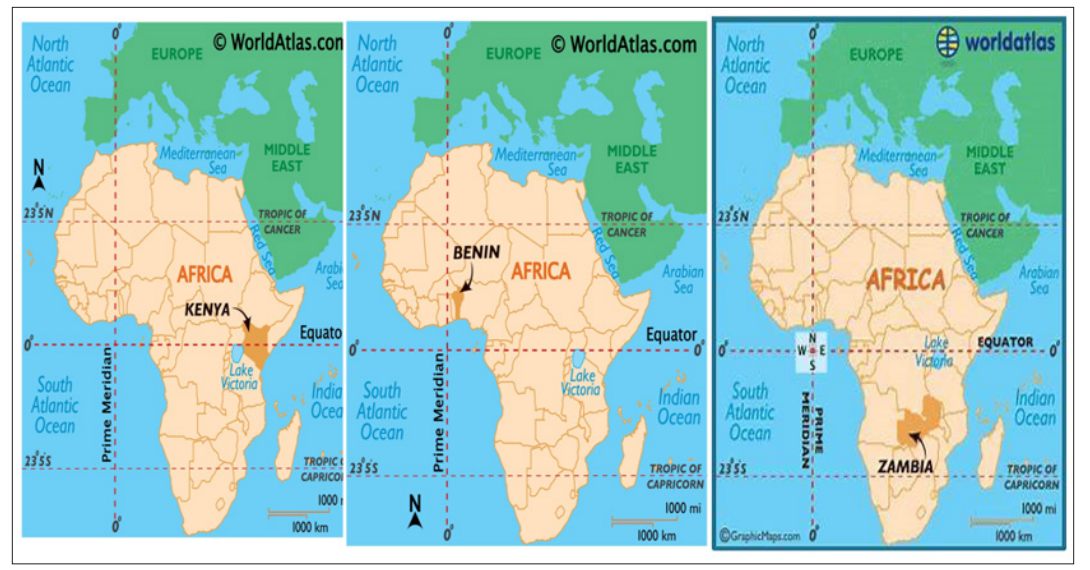
Figure 1: The study area entails three countries to give representatives of the entire African continent: Zambia as the southern, Kenya as the eastern, and Benin as the representative of western Africa.
This research was carried out as part of a review of existing literature and a relevant systematic analysis reflection of the literature to highlight the approaches and objectives already being pursued with regard to innovative approaches to wastewater treatment and management. Several documents, such as articles, reports and peer reviews, were considered in this study. The research articles found were related to the different approaches used for the development of an integrated wastewater management system, Physicochemical and bacteriological analyses of wastewater in Benin, Conventional wastewater treatment in Zambia and Constructed wetlands for Kenya.
The data collection period lasted from 9 October 2023 to 13 December 2023. Databases such as hierarchical, network and relational databases and other search engines such as Google ScienceDirect, Google Scholar and other indexed journal sites such as MDPI, Elsevier and specialist journals on wastewater treatment and management such as WHO (World Health Organization). The search included all sources from 2008 to 2023. limited our search to scientific articles, papers and reports from international organizations, NGOs and treatment-related companies. Standard web searches were carried out to access articles in electronic articles in electronic databases, including Research Gate, Google Scholar and Google and other indexed journals.
All 208 articles Benin, Kenya, and Zambia retrieved were reviewed, and all duplicates were removed. All retrieved articles were examined using their titles, abstracts or, in some cases, a complete reading of the article to justify their inclusion in the definitive reference list. Based on their titles, abstracts and preliminary readings, 63 articles were excluded. In a complete reading of the remaining 145 articles, a further 21 were excluded, leaving 124 articles. The 21 articles were excluded from the final list because they focused on general policies dealing with forest management and did not address wastewater treatment and management. The search keywords were wastewater treatment and management, wastewater treatment, water quality, environment, pollution, and Africa. The search yielded 52 article numbers, all of which were retained for review and analysis. Articles were sorted according to the article checklist for each research question.
The data was analyzed qualitatively by assigning different categories to different pieces of information. Content analysis was carried out by checking the questions to ensure the validity and authenticity of the data provided using their titles, summaries or, in some cases, a complete reading of the article. All the information was analyzed according to the research questions and available information.
Characterize that primary water supplies for residents of Nairobi are rivers, dams, and lakes; however, these bodies of water are heavily contaminated due to untreated wastewater directly discharged from residences, industries, and numerous other sectors. According to improper rubbish collection practices in both rural and urban areas contribute to the contamination of water bodies in the city, as do high pathogen and microbe levels that seep into water sources [6]. Prior research has demonstrated that over 100,000 households in poor urban areas utilize untreated wastewater for agricultural purposes, with only approximately half of the wastewater generated in the city ending up in wastewater treatment facilities.
Building structures and using gravel tanks to remove leftover waste are the first steps in wastewater treatment. This is because the residual waste has the potential to disrupt the flow and consequently halt the gears that are used in the later wastewater purification process.
The physical procedures involved in the primary treatment stage include screening, grit material removal, and sedimentation to separate and eliminate oil and fatty acids, suspended solids, and settleable that float, such as paper bags and associated plastics. However, during the initial phase of treatment, BOD and nutrients (nitrogen and phosphorus) are removed at a low rate as well.
Through aerobic and/or anaerobic microbial activities, biodegradable organic matter and organic nitrogen are eliminated and transformed into water, carbon (IV) oxide, and nitrates. Other primary and secondary treatment methods utilized include activated sludge, spinning bio-discs, waste stabilization ponds, constructed wetlands, trickling filters, and aquaculture.
The stage primarily aids in removing nutrients, TSS and BOD5, total phosphorus (which includes soluble and particulate phosphorus dispersed from the secondary effluent), and total nitrogen (which includes organic and ammonium nitrogen). In addition, it is intended to aid in the management of eutrophication at the water’s surface and specific reuse systems, such as constructed wetlands, chemical precipitation, aquaculture, nitrification, disinfection, denitrification, and so forth.

Figure 2: The flow diagram showing the steps involved in typical conventional wastewater treatment systems
A study on the quality of treated wastewater for reuse by pointed out that quite a few wastewater treatment systems in Kenya are managed by Nairobi City Water and Sewerage Company (NCWSC), which treats different kinds of wastewater [7]. According to data from Kenya's sewage treatment database, there are 49 sewage treatment systems, 27 of which use stabilization technology. Above all, the wastewater management of Kenya has not effectively been addressed by the government's political and social leaders to curb water scarcity by ensuring good monitoring of the treatment plant and reuse of the treated wastewater to increase water accessibility to the residents in the country.
|
Technology |
Total number of public plants within the country |
Remarks/comment |
|
Stabilization Ponds 27 Publicly operated systems |
27 |
Operates as pubic systems |
|
Constructed wetlands |
10 |
Utilized mostly in towns/ urban center |
|
Activated Sludge (Conventional) |
6 |
Usually in pathetic condition |
|
Aerated lagoons |
3 |
|
|
Oxidation ditch |
3 |
|
|
Total |
49 |
The treatment systems include a variety of chemical, biological, and physical processes that aid in removing pollutants from wastewater, including solid particles, high concentrations of nutrients, and organic content. According to a study by, conventional wastewater treatment systems typically produce effluents that have a high bacterial load, phosphorus, nitrogen, and biological oxygen demand, which pose a threat to the receiving environment despite their stated goal of reducing pollution load on the ecosystem [8]. Furthermore, a study by found that although conventional waste treatment facilities are mostly utilized in Kenya, their number and condition are limited due to the high maintenance and operation costs [9].
The Kariobangi process plant is a traditional wastewater treatment facility with a 32,000 m3 daily capacity that uses biological aerated filters. The primary application of filtering technology is water purification. The second largest wastewater treatment plant in Africa and the largest in Nairobi City is the Dandora Estate Sewage Treatment Works (DESTW) in Ruai, Kenya. The Dandora stabilization ponds, a lagoon-based facility with artificial aeration to aid in the biological oxidation of wastewater, notably, they are primarily used to treat combined domestic and industrial sewage to lower the concentrations of pollutants from the industries. Furthermore, report that the wastewater treatment plant (WWTP) handles around 80,000 m3 per day, or roughly 80% of the wastewater produced/generated in the city, with a removal rate of 91% of the total BOD5; moreover, 120,000 m3 is its daily maximum volume.
According to, the Dandora Estate Sewerage Treatment Plant, which treats 80,000 m³ of wastewater per day (80% of Nairobi’s wastewater) and is situated 30 km from Nairobi, Kenya, remains Kenya’s largest and second in Africa wastewater stabilization pond [10].
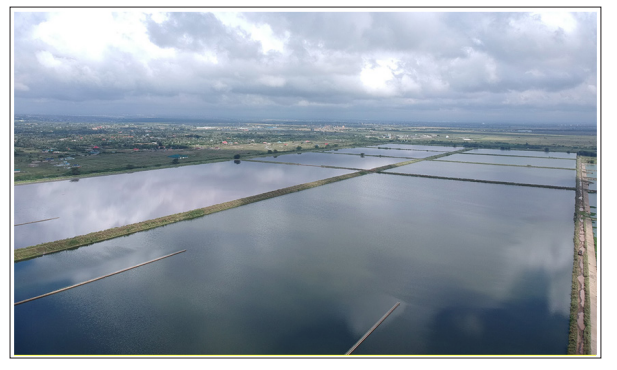
Figure 3: Dandora WWTP (AWWDA, 2020) [11].

Figure 4: The schematic flowchart process of Nairobi, Kenya's Dandora/Ruai treatment facility for wastewater plant
According to, the Kariobangi and Ruai WWTP's results indicated ineffective wastewater treatment, producing effluent that was above the nation's permitted limits [7]. Overall, the results demonstrated that the effluent levels of the Kariobangi and Ruai sewage treatment plants, respectively, were significantly higher than the national standard for TSS (30 mg/l), COD (50 mg/l), and BOD (30 mg/l), discharged to water sources and land. The TSS and COD levels were 131 mg/l and 71 mg/l, BOD5 70 mg/l and 164 mg/l, and BOD5 291 mg/l and 316.3 mg/l, respectively. Furthermore, it was noted in other research that the treated wastewater's COD, phosphorus, TSS, BOD5, and effluent concentrations did not match Kenya's standards for environmental pollution control and reuse.
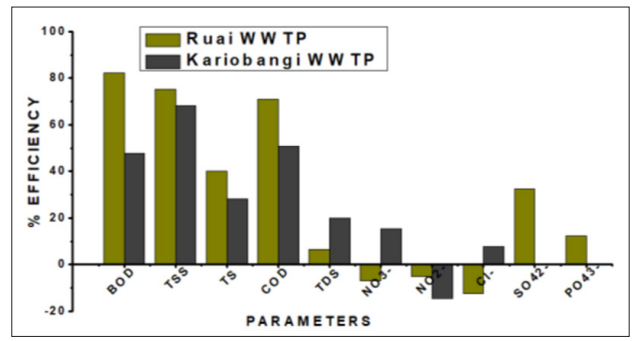
Figure 5: Parameters On Ruai Versus Kariobangi WWTP's Efficacies In Removing Pollutants
Since the Kenya National Environmental Management Authority (NEMA) failed to provide guidelines for a number of the parameters for utilizing the treated wastewater for irrigation, the effluent concentration for biological oxygen demand, TDS, COD, TSS, and pH were compared to irrigation guidelines from several nations that irrigate with treated wastewater. Either treated or not, irrigation of wastewater is prohibited in Kenya; yet, poor urban dwellers engage in this illegal practice.
In Kenya, several wastewater regions use different constructed wetlands treatment systems. According to, these wastewater treatment procedures are the most cost-effective worldwide, particularly in developing nations where the treated water is of higher quality and may be recycled. As the first splash wetland to be built in Nairobi, Kenya embraced the usage of these facilities to treat household wastewater, primarily from restaurants combining the surface and subsurface flow systems.
The effectiveness, advantages, and drawbacks of utilizing wetland systems for wastewater treatment at Kenyan hotels and game lodges were determined by Makopondo et al.'s 2020 study. The study found that the system is efficient at removing contaminants from wastewater so that it can be reused for landscaping, is simple to set up, requires little energy to operate and maintain, and can manage varying flows.
For the Dandora/Ruai sewage treatment plants, overloading is currently causing the treatment plant's effluent to be low, rendering it to fall short of meeting the required quality criteria. Given that, its effluent is released into the Nairobi River after for reuse purposes. In accordance with that, the Athi Water Works Development Agency suggested the building of a new Energy Generating Facility that would use methane gas (generated by the stabilization ponds) to generate power to enhance plant performance and lower greenhouse gas emissions [11].
The inadequate and ineffective treatment system contributed to the low quality of treated water effluent exhibiting a high content of BOD, phosphorus, TSS, nitrate, COD, and lead above the specified regulatory discharge levels. Both the single-operated built/ constructed wetland and waste stabilization ponds were ineffective at removing nutrients. The ammonia-based nitrogen contaminant in the pretreated effluent from the primary facultative pond had a negative removal efficiency by the horizontal flow built wetland, given that the quality of the discharge was above the established limitations. When combined with a more efficient technique, the constructed wetland proved cross-method effectiveness in treating wastewater. They are also a better option than waste stabilization ponds and conventional treatment systems because they are simple to maintain and control the production of effluent quality because of the easily adjustable hydraulic systems' loading rate and system flow rate.
Due to the distinctive features of aerobic, anaerobic, and anoxic processes, it is feasible to optimize the reduction of nitrogen and organic matter through the integration of horizontal and vertical flow-created wetlands. As a result, they can be coupled to create a hybrid wetland that supports one another and generates low- polluted wastewater. Resultantly, through the usage of wetlands, the treatment of wastewater released into the environment without appropriate sewage routes can be readily implemented in slum areas. Furthermore, better upkeep and efficient operation of the plants via vigilant observation are necessary to prevent the production of effluent that does not fulfill environmental discharge regulations.
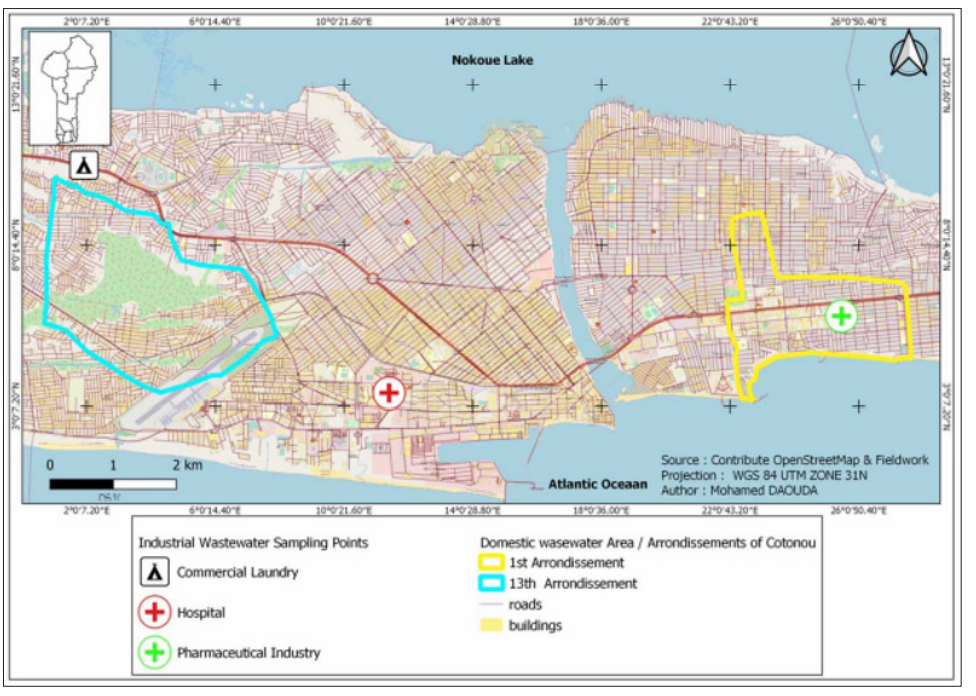
Figure 6: Map Showing the Study Sampling Areas for 5 Types of Waste Water [12].
Benin, like most developing countries, has a highly decentralized system with sanitation facilities such as latrines, septic tanks, and bedpans whose by-products (sludge) are discharged into the environment via an increasingly inefficient lagoon stabilization plant [3]. Thus, the discharge of industrial effluents highly threatens the Cotonou lagoon and the Atlantic Ocean, the contribution of storm drains and septic sludge [4,12].
In addition, wastewater is a source of pollution from waterways [12-15].
Houses without a public water supply system, residents relied on water sources such as wells or the lagoon for domestic uses such
as laundry, washing clothes, cleaning the house, bathing, cooking, and other uses such as washing cars and garages [3].
In most houses (59.7%), wastewater from the bathroom is diverted to an infiltration tank attached to the septic tank or a completely separate septic tank. 1.8% of households have connected their bathroom to the public storm sewer, while the rest discharge their wastewater directly into the street, lagoon, backyard, or yard. Most wastewater from other domestic uses was discharged directly into the environment.
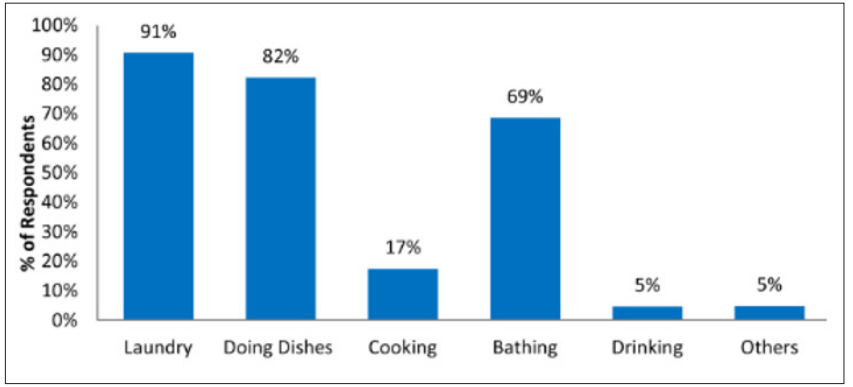
Figure 7: Uses of Water from Wells [3].
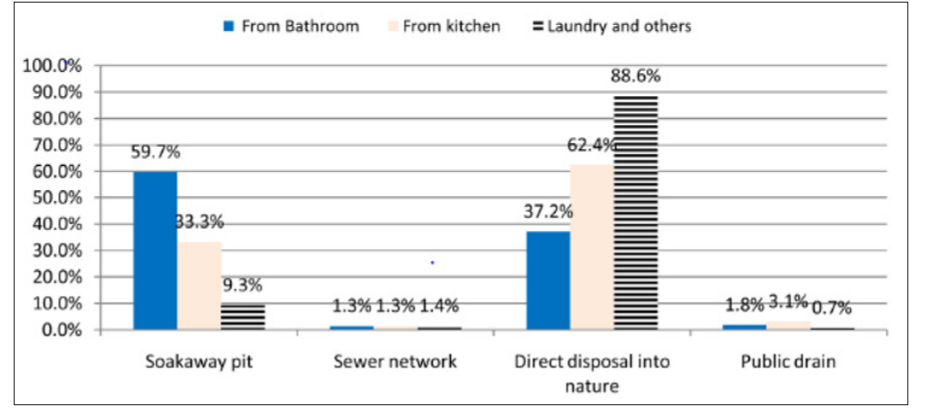
Figure 8: Sullage Disposal [3].
The parameters measured include pH, temperature, dissolved oxygen, suspended solids (SS), chemical oxygen demand (COD), biochemical oxygen demand (BOD), and fecal coliforms. The sampling and analysis methods and standards used to measure these parameters are identical to those used for water characterization [3].
Due to the multiple efforts to build sludge or treatment plants and regulatory pressures in favor of Beninese industries, a statistical study on the physicochemical characterization of urban wastewater was carried out so that it can be better taken into account in decision-making tools for regulating the sanitation sector. Five types of urban waste waters were sampled in the city, universities, and luxury hotels in Cotonou [3,12,16]. This study focused on domestic, hospital, pharmaceutical, and commercial wastewater produced in Cotonou, the economic capital of Benin. The results were analysed to assess the impact of their mixing on wastewater treatment plants and the most relevant parameters to take into account when designing a treatment plant.
The results of the study showed a significantly high difference between the various urban wastewater parameters (rAnova, p < 0,001) [12]. The high pH and total phosphorus levels in commercial laundry waters confirm their alkalinity, suggesting the use of detergents and surfactants [17,18]. Pharmaceutical wastewater and black water are characterized by appreciably higher levels of absorbing substances (SAT) than another urban wastewater. Various studies also point out that the composition of wastewater is closely linked to the type of industries and activity processes [19].
Analysis of the variance of UV absorbance at 254 nm indicates that the concentration of micropollutants in domestic wastewater is lower than in industrial wastewater [12]. The average biodegradability (COD: BOD5) of hospital wastewater explains the application of activated sludge treatment at the CNHU-HKM. Note that the low (COD: N:P) ratio recorded for commercial wastewater and greywater reflects an excess of nutrients [20].
Despite their average biodegradability (COD: BOD5 less than 3), excess nutrients in grey water may require physico-chemical treatment [21,22]. demonstrated the effectiveness of a sequential biological reactor (SBR) coupled with ultrafiltration to treat grey water effectively, with characteristics similar to those in this study [23]. Pharmaceutical wastewater, being the least biodegradable (2<COD:BOD5<3) with a marked lack of nutrients, directs the choice of treatment methods towards bioremediation and advanced oxidation processes [24,25]. The specific nature of each type of urban wastewater and the growing presence of emerging pollutants highlights the importance of tertiary treatment of effluents before they are discharged into the natural environment.

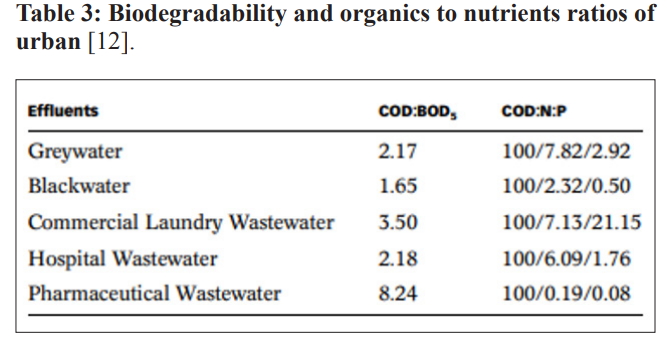
The study reveals that most hotels in Cotonou do not have wastewater treatment plants. Analyses indicate that sites using activated sludge are more efficient. However, none of the plants examined met WHO quality standards from a bacteriological point of view. As a remedy, the installation of wastewater treatment plants (WWTPs) is suggested for all hotel establishments in Benin. Activated sludge WWTPs, comprising pre-treatment, primary treatment, secondary treatment, and tertiary treatment stages, are recommended to ensure effective wastewater treatment [11,16].
A simple macrophyte lagoon system was designed to treat and recycle domestic wastewater. Characterization of the water showed that it is biodegradable (COD/BOD5 = 2.34) and, therefore, well suited to the proposed lagoon process. A study of the performance of the systems showed that the duckweed system performed better than the algae system in eliminating organic matter and nutrients and was more effective in eliminating pathogens. The quality of the effluent obtained from the two systems meets WHO recommendations for reuse in agriculture [3].
The physicochemical characteristics of five samples of urban wastewater collected in Cotonou were examined as a decision- making tool for integrated wastewater management in Benin. The results indicate that the physico-chemical composition of wastewater is largely influenced by its typology, source, and geographical location. Statistical analysis reveals significant differences according to effluent type, with a moderate correlation between the organic pollution parameters of each sample.
Black water has a high biodegradable organic load, while grey water is associated with excess nutrients in domestic wastewater. For industrial wastewater, distinguishing characteristics include alkalinity and phosphorus content on the one hand and high dissolved and non-biodegradable organic load on the other, specific to the commercial laundry and pharmaceutical wastewater sectors, respectively.
Hospital wastewater is similar to domestic wastewater but is a complex effluent. It is, therefore, crucial to ensure the quality of industrial wastewater before it is discharged into urban wastewater treatment plants, particularly in the case of pharmaceutical wastewater. The results of the correlation tests confirm the relationship between the organic parameters, highlighting that UV absorbance at 254 nm can be considered an overall indicator of the organic quality of wastewater, with the exception of black water [12].
In conclusion, the joint use of UV absorbance at 254 nm and COD could improve the sizing of wastewater treatment plants. For future research, it is recommended that the relationship between UV absorbance at 254 nm and specific parameters such as pharmaceutical residues and surfactants be explored. Activated sludge SPETs with pre-treatment (screening, grit removal), primary treatment (settling), secondary treatment (biological) and tertiary treatment tertiary treatment (phosphate removal, disinfection) are recommended for effective wastewater treatment.
Waste management in Zambia is primarily based on the collection and disposal of waste in open dumps or landfills. Only 10% of the waste generated in the country is collected, while the remaining waste is in open dumps or littered on the streets. However, many concerns about water quality are widespread, but the true scope of the problem is uncertain. Moreover, in domestic or industrial usage, a considerable amount of freshwater is turned into wastewater and disposed of into surface water and/or groundwater in a treated or untreated form. Additionally, water source pollution is a significant challenge, especially in third-world countries, with an estimated 90% of sewage and 70% of industrial wastewater being discharged into the environment without treatment [5].
The major pollution of wastewater is generated from different sources like rainwater, industries, breweries and other faecal matters. The case study in Zambia was centred on the breweries industry. Zambian breweries are the major industries that generate income for people through the production of different beverages; while this is good for financial independence, creating employment and contributing to the economic balance, this has also brought about a lot of environmental disadvantages by increasing wastewater pollution. Moreover, many brewery industries have not trained enough to come to a final conclusion on how to adhere to this challenge.
Industrial, municipal and domestically generated wastewater, particularly in developing countries such as Zambia, is released into the environment without proper management. The open sewer lines and poorly operated septic tanks are mainly used to manage household-generated wastewater. The brewery industries are widespread in Africa and require a large amount of freshwater to generate the product. The brewing sector is observed as a significant part of the global economy, and large quantities of wastewater.
In Zambia, currently, there are five main breweries in the beer industry: Zambian, National, Capitol, Chat, and City breweries, and they are all based in cities where they compete for water with domestic demand [26]. The breweries are categorized into two kinds: those producing the 'western' style lager beer and those producing the traditional 'chibuku' beer.
The production of the beer undergoes several processes involving biochemical, physical and chemical, which are categorized as rough beer and wort clarification and separation in physical processes and boiling, fermentation and maturation, and mashing as biochemical and chemical reaction processes. However, malt, milling, mash tuning, coppering, hop backing, wort cooling and aeration, fermentation, cellaring, and filtration are the most critical processes in conventional brewing (Fig, and fermentation of sorghum grits, maize, malt and large volume of water are the basic raw materials used for 'traditional' breweries [25]. Industrial wastewater is treated by conventional wastewater treatment plants. This treatment removes approximately 50-70% TSS, 25-50% BOD removal, and 65% oil and grease removal [27].
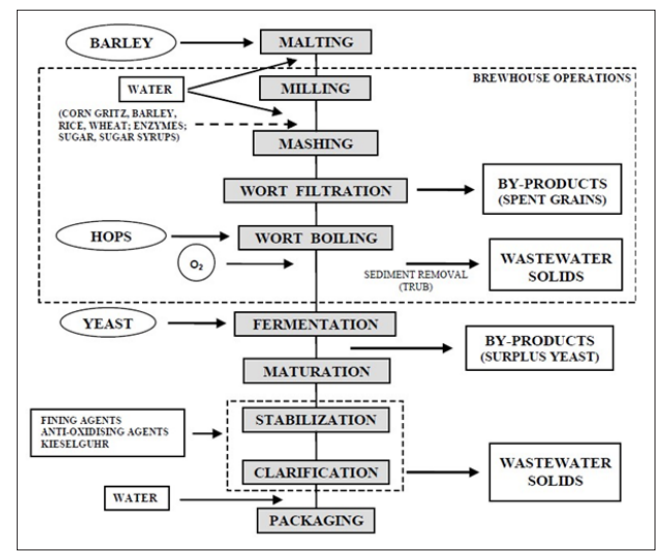
Figure 9: Technological Process in Conventional Breweries
The processes are observed to contain about 97% BOD concentration in the effluent wastewater generated. The beer brewing process involves consuming a large amount t of water, thus leading to the generation of large volumes of polluted water in the environment, as stated by. Also, the study explained that the large volume of wastewater generated from these industries is sometimes discharged to water bodies such as rivers, lakes and others leading to severe pollution problem in the water due to high organic contents such as COD and BOD that require oxygen for degradation, pH of a range 2-12, high temperature ranging from 25°C - 38°C.

Figure 10: Brewery Wastewater Discharge (a) And Municipal Wastewater (b) (source: Industrial Waste Management National Water Supply and Sanitation Council (NWASCO) in Lusaka, Zambia)
Industrial wastewater from the breweries is a mixture of discharges from different plant sources: spent grains, kieselguhr, waste yeast, and sprinkled beer from packaging, as well as chemicals used in Clean in Place (CIP) units. (e.g. sodium bicarbonate, acetic acid, and nitric) There are different types of these discharges [25]. The quality of brewery wastewater is mainly characterized by its physicochemical parameters, including the chemical oxygen demand, biological oxygen demand, total suspended solids, pH, and total Kjeldahl nitrogen.
The LWSC established a "Quality Policy Statement" to regulate effluent quality entering sewers. Industries are required to pre- treat wastewater before discharge to prevent highly contaminated effluent. Non-compliance has led to significant pollution, hindering biological reactions and yielding poor treated wastewater quality, exceeding 250 mg/L BOD5 [28].
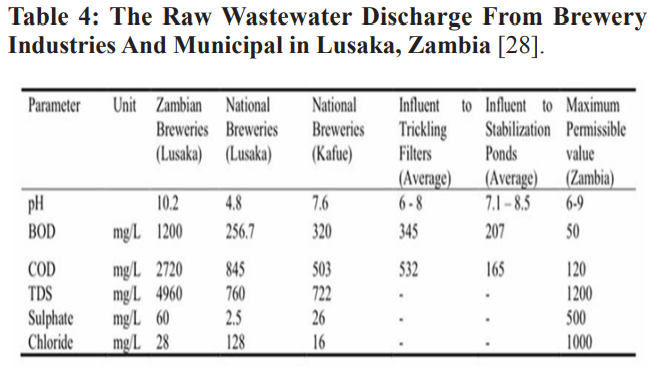
The brewery industries in Zambia were observed to generate wastewater of high concentrations of pH, BOD, TSS COD, and TDS (Zambian breweries in Lusaka), above the set allowable limits for discharge. Also, observation was made for the wastewater concentrations at the municipal and domestic discharges to the treatment plants and sewer lines of high concentration in pollutants load. As a result, methods of characterizing wastewater are based on a few pollutants that indicate. The average quality has been developed [25]. This has aided in developing guidelines or standards to regulate wastewater discharge into sewer lines or water bodies [28].
|
City/Town |
Name of Breweries |
Method of Treatment |
Effluent Disposal |
|
Lusaka |
Zambian Breweries |
None |
Public Sewers |
|
Lusaka |
National Breweries |
Screening |
Public Sewers |
|
Kitwe |
Northern Breweries |
Sedimentation |
Public Sewers |
|
Kafue |
National Breweries |
Screening |
Public Sewers |
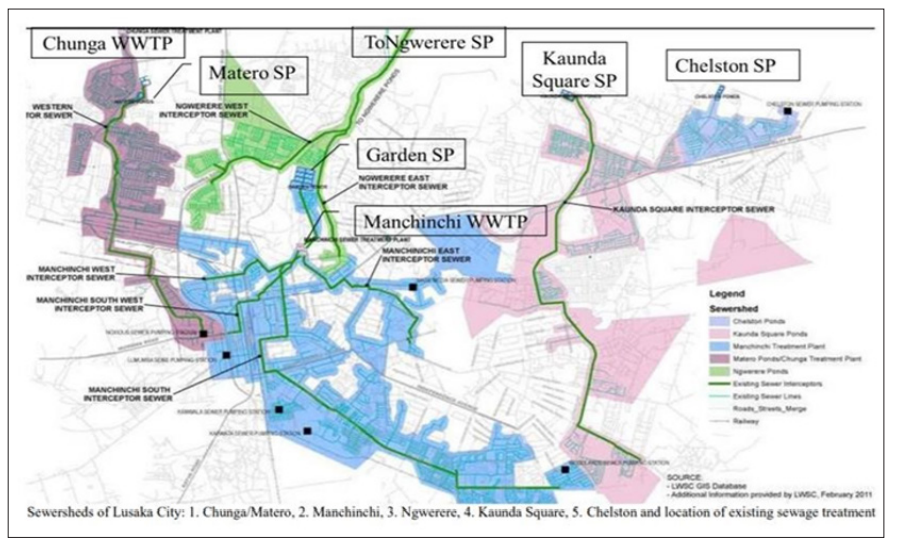
Figure 11: Wastewater Treatment Plants In Lusaka, Zambia [7].
The treatment plants and drainage sewer systems are operated and maintained by the Lusaka Water and Sewerage Company (LWSC). Moreover, in Lusaka, Zambia, there are 2 conventional WWTPs (Chunga and Manchinchi) consisting of trickling filters and stabilization ponds working together and 4 waste stabilization ponds (WSPs) as stated by [29].
The effluent from the trickling filters is usually directed to a stabilization pond for further treatment to achieve a better end-quality effluent. However, the treatment process leads to the production of a large volume of sludge, and with the sludge drying beds sited at the Manchinchi and Chunga WWTPs, the dried sludge is sold for agricultural use. Additionally, the sludge contains a great amount of biodegradable organic matter [30]. The treatment facilities serving Lusaka are observed to be hydraulically overloaded with around twice the maximum design flow.
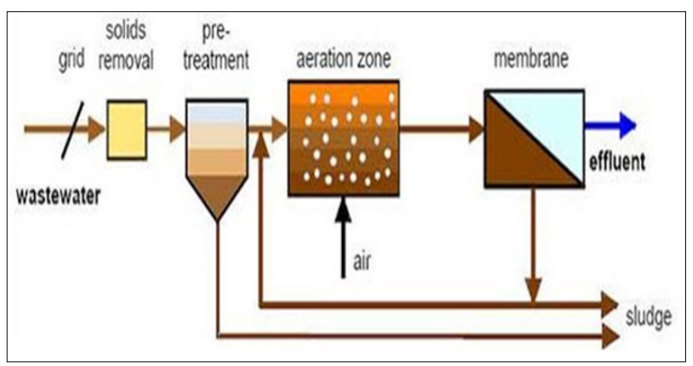
(A) Off-Site Wastewater Treatment Systems Which are a Common Practice 24
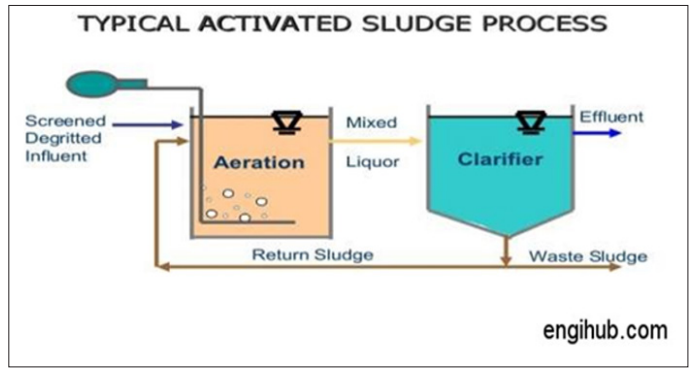
(B) Activated Sludge Treatment Combined Trickling Filter Plants in Most of the Cities and Towns, and Stabilization Ponds
The Lusaka Water and Sewerage Company (LWSC) operates and maintains the treatment plants and drainage sewer systems. Moreover, in Lusaka, Zambia, there are 2 conventional WWTPs (Chunga and Manchinchi) consisting of trickling filters and stabilization ponds working together and 4 waste stabilization ponds (WSPs) as stated by [29].
The effluent from the trickling filters is usually directed to a stabilization pond for further treatment to achieve a better end- quality effluent. However, the treatment process leads to the production of a large volume of sludge, and with the sludge drying beds sited at the Manchinchi and Chunga WWTPs, the dried sludge is sold for agricultural use. Additionally, the sludge contains a significant amount of biodegradable organic matter [30]. The treatment facilities serving Lusaka are observed to be hydraulically overloaded with around twice the maximum design flow. According to in Kenya, the Kariobangi and Ruai WWTP's results indicated ineffective wastewater treatment, producing effluent that was above the nation's permitted limits [7].
In Zambia, Benin and Kenya the treatment plants are observed to be inefficient in the removal of pollutants due to overloaded and overfilling that is attributed to high operation and maintenance cost. The wastewater with high concentration of COD, BOD, TSS, TDS was recorded in the study which requires effective treatment facilities this result is not in harmony with Benin because he characterization of its waters has shown that they are biodegradable (COD/BOD5 = 2.34) and therefore well suited to the process of proposed lagoon. Furthermore, it was noted in other research that the treated wastewater's COD, phosphorus, TSS, BOD5, and effluent concentrations did not match Kenya's standards for environmental pollution control and reuse [31].
Recommendations for WWTP’s in the Three Countries Overloading has been causing the treatment plant's effluent which is released into the Nairobi River for reuse, thus rendering the plant to fall short of the necessary quality criteria.Suggestion is building a new Energy Generating Facility that would use methane gas (generated by the stabilization ponds) to generate power to enhance plant performance and lower greenhouse gas emissions.
The disadvantages of conventional wastewater treatment encourage researchers to develop a new, cost-effective method for treating high-organic load wastewater. High maintenance costs due to greater energy requirements, as well as the generation of massive sludge deposition and finally operational complexities, are all major challenges in adopting these techniques. Therefore, an onsite wastewater treatment particularly for the brewery industries is recommended to reduce overloading of the WWTPs in zambia. More so embracing of recent technologies like use of absorbent materials technology and biochars, could be a prefarable solution for the three countries [32-42].
Acknowledgments: Professor Tomasz Bajda and Mateusz Skalny
